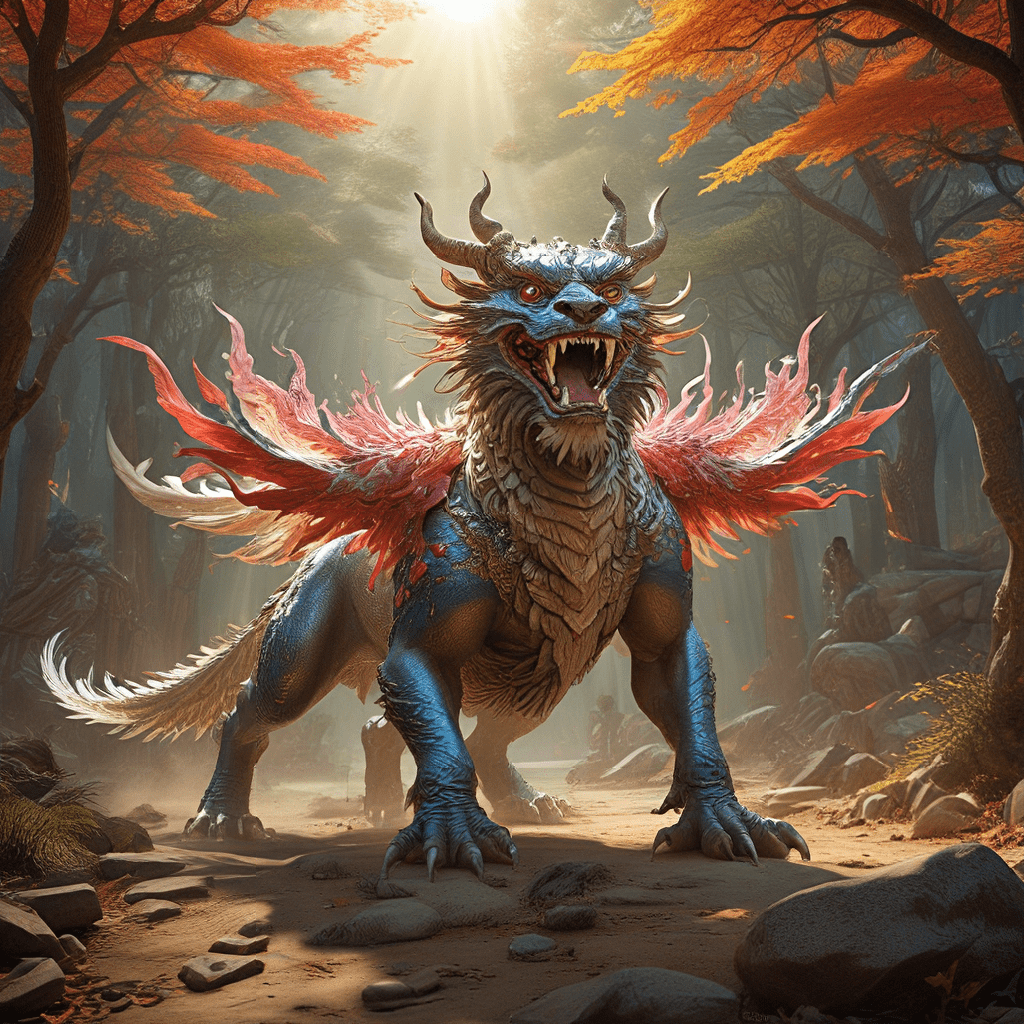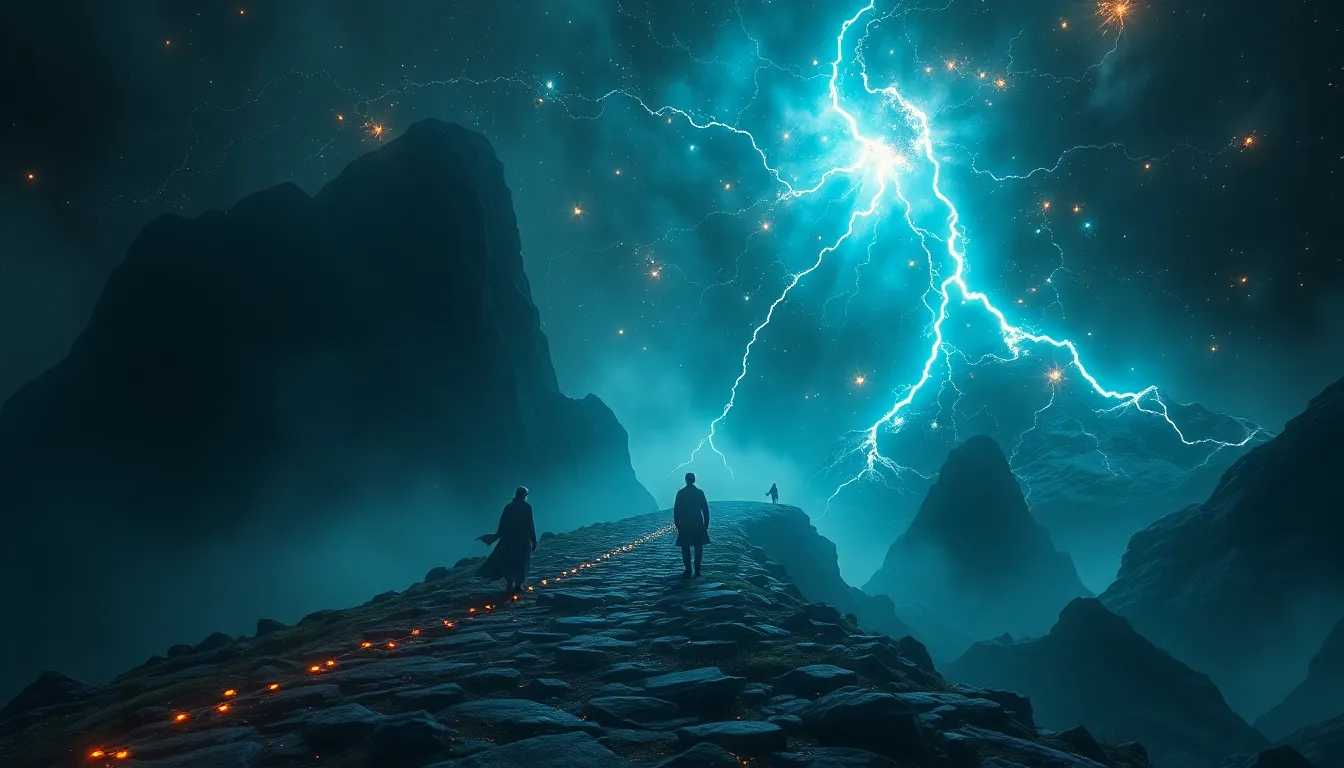The Tale of the Magpie Bridge: A Korean Folklore Classic
The Tale of the Magpie Bridge is a cherished Korean folktale that beautifully encapsulates the enduring power of love and sacrifice. This romantic legend, woven into the fabric of Korean folklore, speaks to a universal human desire for connection and the strength of love in the face of adversity.
The tale, also known as the "Magpie Bridge Festival," is deeply rooted in Korean culture and is often recounted during the seventh month of the lunar calendar, when the Milky Way is at its most prominent. It is a beloved story that resonates across generations, inspiring countless works of art, literature, and even modern celebrations.
The Legend of the Magpie Bridge: A Love Story Across the Milky Way
In the heart of the Milky Way, where the heavens shimmer with celestial beauty, lies a poignant love story. The legend tells of a celestial maiden named "Chi-nyeo" who fell deeply in love with a mortal shepherd named "Hwang-o." Their love was forbidden, their worlds separated by the great expanse of the Milky Way.
The celestial realm, however, was bound by strict rules that prohibited any form of interaction between mortals and immortals. The Heavenly King, outraged by their defiance, separated the lovers, banishing Chi-nyeo to the far side of the Milky Way.
Despite their separation, the lovers' affection only grew stronger. They yearned to be together, their love transcending cosmic boundaries. Their unyielding love touched the hearts of the celestial creatures, particularly the benevolent magpies.
The Role of the Magpie in Korean Folklore: Messenger of Love and Hope
In Korean folklore, the magpie holds special significance, symbolizing love, good fortune, and the ability to convey messages between realms. The magpies, moved by Chi-nyeo and Hwang-o's devotion, decided to help them reunite.
Driven by their empathy and love, the magpies formed a bridge across the Milky Way, linking the celestial realm to the mortal world. Their sacrifice, their unwavering love, and their dedication to the lovers' cause became a testament to the enduring power of love.
The Origins of the Tale: Tracing the Roots of the Magpie Bridge Legend
The origins of the Magpie Bridge legend can be traced back to ancient Chinese and Korean folklore, where the image of the magpie as a symbol of love and messenger was deeply entrenched. The tale, however, underwent adaptations and evolution as it spread across various cultures.
The Korean version of the legend is unique in its emphasis on the sacrifice of the magpies, their unwavering devotion to the lovers, and the significance of the magpie in Korean folklore.
The Seven Magpies and Their Bridge: A Symbol of Sacrifice and Unwavering Love
In the Korean version of the legend, the magpies are depicted as seven selfless creatures. Their collective efforts are a symbol of the power of unity and the capacity for love to bridge even the most daunting barriers.
The magpies, through their collective sacrifice, symbolize hope and the possibility of love conquering adversity. They serve as a powerful reminder that even the most impossible dreams can come true with unwavering hope and selfless love.
The Meeting of the Lovers: A Night of Love and Reunion Under the Milky Way
On the seventh night of the seventh lunar month, the magpies bridge the Milky Way, allowing Chi-nyeo and Hwang-o to meet. Under the celestial glow of the Milky Way, the lovers spend a precious night together, their reunion a testament to their unwavering love. This night of reunion, a symbol of love and hope, is celebrated across Korea as the Magpie Bridge Festival.
The meeting of the lovers underscores the transformative power of love. It shows that love can overcome any obstacle, even the cosmic boundaries that separate worlds. The night under the Milky Way becomes a symbol of hope, reminding people that even in the face of adversity, love can prevail.
The Tale’s Enduring Impact: The Legacy of the Magpie Bridge in Korean Culture
The Magpie Bridge legend has left an indelible mark on Korean culture, woven into the fabric of its history, art, and literature. The story is frequently depicted in paintings, poems, and songs, reflecting its profound influence on Korean artistic expression.
The tale’s enduring popularity speaks to its universal appeal. It touches on themes of love, sacrifice, and the power of hope, themes that resonate across cultures and time. The enduring impact of the Magpie Bridge story is a testament to the power of storytelling and the enduring human desire for love and connection.
The Magpie Bridge Festival: Celebrating Love and Reunion
The Magpie Bridge Festival, celebrated on the seventh night of the seventh lunar month, is a vibrant celebration of love and reunion. This festival, a testament to the enduring legacy of the Magpie Bridge legend, is marked by a multitude of traditions and activities.
Families gather together, sharing stories of the legend and enjoying traditional Korean foods. Couples exchange gifts and rekindle their love under the shimmering light of the Milky Way. The festival is a time for celebration, reflection, and reaffirmation of the enduring power of love.
Theological Interpretations: The Magpie Bridge as a Symbol of Divine Intervention
From a theological perspective, the Magpie Bridge story can be interpreted as a testament to divine intervention and the power of prayer. The magpies, guided by the lovers' unyielding devotion, symbolize divine intervention, their bridge representing God's grace and support in answering prayers.
The story can be seen as a reminder that love, faith, and prayer can move even the heavens, demonstrating the power of belief and devotion in shaping one's destiny. The tale encourages individuals to embrace the power of prayer and trust in the divine guidance to overcome life’s challenges.
Psychological Perspectives: The Tale as a Reflection of Human Desire for Connection and Love
From a psychological viewpoint, the Magpie Bridge legend mirrors the human desire for connection and love. The story speaks to the longing for companionship and the pain of separation, universal emotions deeply ingrained in the human experience.
The tale's appeal lies in its ability to tap into these profound human emotions, offering a glimpse of hope and resilience in the face of adversity. The legend's popularity is a testament to the enduring human longing for love and the strength of hope in the face of challenging circumstances.
FAQ
Q: What is the Magpie Bridge legend?
A: It's a Korean folktale about a celestial maiden and a mortal shepherd who fall in love but are separated by the Milky Way. Magpies form a bridge to allow them to reunite on the seventh night of the seventh lunar month.
Q: What does the Magpie Bridge symbolize?
A: It symbolizes love, sacrifice, hope and the ability to overcome obstacles, even those seemingly impossible. The magpies represent the power of unity and devotion.
Q: How is the legend celebrated?
A: It's celebrated during the Magpie Bridge Festival. Families gather, couples exchange gifts and rekindle their love, and people enjoy traditional Korean foods.
Q: What is the significance of the seventh night of the seventh lunar month?
A: It's believed that the Milky Way is at its most prominent during this time, allowing the lovers to reunite.
Q: What is the history of the Magpie Bridge legend?
A: Its origins can be traced back to ancient Chinese and Korean folklore but has evolved and become a beloved story in Korean culture.



